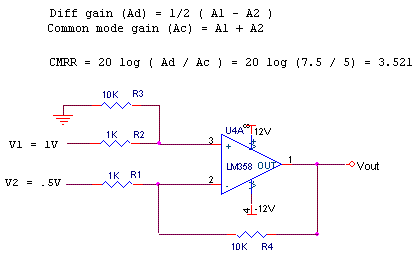Suresh R
Member level 1
CMRR
Friends,
i require some assistance in understanding the CMRR value in the datasheet to make efficient use of it.
for LM358 : CMRR = 85dB for the entire range(0 - (V+ - 1.5)) of common mode voltage.
For the above value, what can be my differential input to the OpAmp, to achieve better common mode rejection ratio(CMRR)?
In simple terms could i get some practical description to understand it.
Kindly revert to me for any clarifications.
regard's
Suresh.
Friends,
i require some assistance in understanding the CMRR value in the datasheet to make efficient use of it.
for LM358 : CMRR = 85dB for the entire range(0 - (V+ - 1.5)) of common mode voltage.
For the above value, what can be my differential input to the OpAmp, to achieve better common mode rejection ratio(CMRR)?
In simple terms could i get some practical description to understand it.
Kindly revert to me for any clarifications.
regard's
Suresh.
